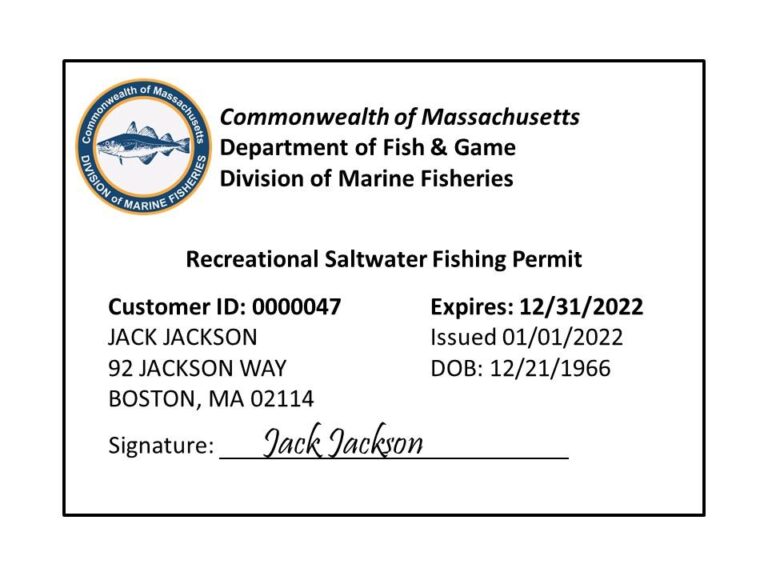Corporate Success: Strategies for Thriving in Business
Corporate culture shapes how a company operates. It affects employee behavior and company success.
Understanding corporate culture is vital for any business. It defines values, goals, and the environment in which employees work. A strong culture boosts morale and productivity. It aligns the workforce with the company’s vision. As companies grow, maintaining a positive culture becomes challenging.
Yet, it is essential for long-term success. In this blog, we will explore the importance of corporate culture. We will also discuss ways to develop and sustain it. Whether you are a business owner or an employee, understanding corporate culture can benefit you. Let’s dive in and see how to build a thriving workplace.

Credit: www.blockadvisors.com
Vision And Mission
A company’s vision and mission are the foundation of its identity. They shape the company’s direction and influence its decisions. A clear vision and mission help a company stay focused and motivated.
Defining Purpose
The purpose of a company answers the “why” behind its existence. It explains why the company was created and what it aims to achieve. This purpose is often reflected in the company’s vision statement.
- Vision Statement: A vision statement describes what the company aspires to become in the future.
- It is future-oriented and inspirational.
For example, a tech company might have a vision statement like, “To innovate and make technology accessible to all.”
Aligning Goals
Once the purpose is clear, the next step is to align the company’s goals with its mission. Goals provide a roadmap to achieve the company’s vision.
- Identify key objectives that support the mission.
- Set measurable targets to track progress.
- Ensure all departments understand and work towards these goals.
For instance, if the mission is to “provide excellent customer service,” goals might include reducing response times and improving customer satisfaction scores.

Credit: www.incnow.com
Leadership Excellence
Strong leadership is vital for corporate success. Effective leaders inspire teams, drive innovation, and achieve organizational goals. Leadership excellence involves mastering various skills. Two key areas are communication and decision making. These skills help leaders guide their teams effectively and maintain a positive work environment.
Effective Communication
Effective communication is crucial for leadership excellence. Clear communication builds trust. It ensures everyone understands their roles. Leaders should listen actively. This means paying attention to team members’ concerns. Responding thoughtfully also matters. It shows respect and understanding. Regular feedback helps improve performance. Praise good work. Offer constructive criticism. This keeps the team motivated.
Decision Making
Decision making is another key aspect of leadership excellence. Leaders face many choices daily. Quick, informed decisions keep operations running smoothly. Weigh all options carefully. Gather necessary information first. Consider the impact on the team. Involve team members in the decision-making process. This encourages collaboration. It also boosts morale. Make decisions confidently. Stand by your choices. This shows strength and reliability.
Market Research
Market research is a critical aspect of corporate strategy. It helps businesses understand their market and make informed decisions. By gathering data and analyzing trends, companies can stay ahead of the competition. Market research involves several key activities, including identifying trends and analyzing competitors.
Identifying Trends
Identifying trends is crucial for staying relevant. Companies need to know what is popular in their industry. This helps them adapt and meet customer needs. To identify trends, businesses can use various tools. Social media, surveys, and industry reports are some of these tools. By tracking trends, companies can predict future demands and align their strategies.
Analyzing Competitors
Analyzing competitors provides insights into their strengths and weaknesses. This information can help a company position itself better in the market. Competitor analysis involves studying their products, marketing strategies, and customer reviews. Understanding competitors’ actions helps businesses improve their own offerings. It also reveals gaps in the market that a company can exploit. Effective competitor analysis can give a business a competitive edge.
Innovation And Adaptability
In the fast-paced world of business, innovation and adaptability are crucial. Companies must constantly evolve to stay competitive. This involves embracing new ideas and adapting to changes in the market. Below, we explore how fostering creativity and embracing change can drive corporate success.
Fostering Creativity
Creativity is the lifeblood of innovation. Encouraging a creative culture can lead to new products and services. Here are some ways to foster creativity in a corporate setting:
- Brainstorming Sessions: Regular brainstorming can spark new ideas.
- Diverse Teams: Diverse teams bring different perspectives.
- Open Communication: Encourage open communication and idea sharing.
Creating a safe space for employees to express ideas is vital. Recognize and reward innovative thinking. This motivates employees to think outside the box.
Embracing Change
Change is inevitable in the corporate world. Companies that adapt quickly gain a competitive edge. Here are some strategies to embrace change:
- Stay Informed: Keep up with industry trends and technologies.
- Be Flexible: Adjust strategies as needed.
- Encourage Learning: Promote continuous learning and development.
Adaptability means being open to new ways of doing things. This can involve adopting new technologies or changing business models. Regularly review and update processes to stay relevant.
Customer Focus
Customer focus is essential for corporate success. It means putting customers at the center of every business decision. Companies that prioritize customer needs build stronger relationships. They also achieve higher satisfaction rates and loyalty.
Understanding Needs
Understanding customer needs is the first step. Start by listening to their feedback. Use surveys and interviews to gather insights. Study their behavior and preferences. This will help tailor products and services to their expectations.
Analyze data to identify trends and patterns. This helps in predicting future needs. Stay updated with market changes. This ensures that your offerings remain relevant. Always aim to meet and exceed customer expectations.
Improving Satisfaction
Improving satisfaction requires continuous effort. Provide excellent customer service. Train your staff to handle queries efficiently. Make it easy for customers to contact you. Respond to their concerns promptly.
Offer personalized experiences. Use customer data to customize interactions. Show them that you value their business. Reward loyal customers with special offers. This builds a strong bond and encourages repeat business.
Regularly review your processes. Identify areas for improvement. Implement changes that enhance the customer experience. Keep communication channels open. Always seek feedback and act on it.

Credit: online.mason.wm.edu
Operational Efficiency
Operational efficiency is crucial for any corporate organization. It helps in reducing costs, improving productivity, and ensuring a smooth workflow. Companies that focus on operational efficiency can gain a competitive edge. This section will explore how to streamline processes and manage resources effectively.
Streamlining Processes
Streamlining processes involves analyzing and improving workflows. It aims to reduce waste and increase productivity. Here are some steps to streamline processes:
- Identify Bottlenecks: Find areas where work gets delayed.
- Automate Tasks: Use software to handle repetitive tasks.
- Standardize Procedures: Create standard operating procedures for consistency.
- Train Employees: Ensure all team members understand new processes.
By focusing on these areas, a company can create a smoother and more efficient workflow. This can lead to faster service and higher customer satisfaction.
Resource Management
Effective resource management ensures that all assets are used optimally. It involves planning, allocating, and monitoring resources. Here are some key aspects:
- Resource Allocation: Assign tasks based on employees’ skills and availability.
- Monitoring Usage: Keep track of resource usage to avoid wastage.
- Technology Integration: Use tools to manage resources effectively.
- Regular Audits: Conduct regular audits to identify areas for improvement.
Managing resources well can lead to significant cost savings. It ensures that every asset, whether human or material, is used efficiently. This creates a more productive and profitable organization.
Financial Management
Effective financial management is crucial for every corporation. It helps in making informed decisions, ensuring stability, and achieving long-term goals. This section delves into key components like budgeting and investment strategies.
Budgeting
Budgeting is the foundation of financial management. It involves planning and allocating resources to various departments. This helps in tracking expenditures and revenues. A well-planned budget ensures that the company does not overspend.
Below is a simple table that outlines a basic corporate budget:
| Category | Planned Amount | Actual Amount |
|---|---|---|
| Salaries | $200,000 | $190,000 |
| Marketing | $50,000 | $45,000 |
| Operations | $100,000 | $95,000 |
| Research and Development | $70,000 | $65,000 |
Regularly reviewing the budget can help identify areas where the company can save money. It also helps in reallocating funds to more critical areas.
Investment Strategies
Investment strategies are equally important in financial management. Corporations need to invest wisely to grow their capital. Different strategies can be employed based on the company’s goals and risk tolerance.
Some common investment strategies include:
- Stock Market Investments: Buying shares of other companies.
- Bonds: Lending money to other organizations for a fixed return.
- Real Estate: Investing in property to generate rental income.
- Mutual Funds: Pooling resources to invest in diverse portfolios.
Each investment strategy has its own risks and returns. Companies must diversify their investments to mitigate risks. Proper research and analysis are crucial before making any investment.
Employee Engagement
Boosting employee engagement can transform the workplace. Engaged employees are more productive, loyal, and motivated. They contribute more to the company’s success.
Motivational Techniques
Using the right motivational techniques is key. Here are some effective methods:
- Recognition and Rewards: Acknowledge hard work. Offer incentives like bonuses or extra time off.
- Clear Communication: Keep employees informed. Share goals and expectations clearly.
- Work-Life Balance: Encourage breaks. Support flexible schedules to reduce stress.
Professional Development
Investing in professional development shows employees you care about their growth. This can lead to higher engagement. Consider these options:
| Development Type | Benefits |
|---|---|
| Workshops | Improve skills and knowledge |
| Online Courses | Flexible learning opportunities |
| Mentorship Programs | Personalized guidance and support |
Encourage employees to pursue certifications. This boosts confidence and expertise.
Sustainable Practices
Sustainable practices in corporate settings are essential for long-term success. Companies now realize the importance of being responsible. This includes environmental, ethical, and social dimensions. Sustainability is not just a trend. It’s a necessity for future growth and stability.
Environmental Responsibility
Environmental responsibility involves reducing a company’s carbon footprint. This can be achieved through various methods. Energy-efficient technologies play a crucial role. Using renewable energy sources also helps. Waste reduction and recycling are key components. Companies must adopt these practices to protect the planet. Sustainable sourcing of materials is another important aspect. It ensures minimal environmental impact.
Ethical Standards
Ethical standards refer to a company’s moral obligations. This includes fair labor practices and fair trade. Paying fair wages and ensuring safe working conditions are essential. Companies must also avoid exploiting workers. Transparency in business operations builds trust. It fosters a positive reputation. Ethical standards extend to customer interactions too. Honest marketing and clear communication are vital. They ensure customer trust and loyalty.
Frequently Asked Questions
What Is Corporate Culture?
Corporate culture refers to the shared values, beliefs, and practices within a company. It shapes employee behavior and company policies. A positive corporate culture can improve job satisfaction and productivity.
Why Is Corporate Governance Important?
Corporate governance ensures that companies operate ethically and transparently. It helps build trust with stakeholders and investors. Good governance practices can prevent fraud and financial mismanagement.
How To Improve Corporate Communication?
Improving corporate communication involves clear messaging, regular updates, and active listening. Use multiple channels to reach employees. Encourage open dialogue and feedback to address concerns promptly.
What Are Corporate Social Responsibilities?
Corporate social responsibilities (CSR) are initiatives by companies to positively impact society. They include environmental sustainability, community support, and ethical business practices. CSR enhances a company’s reputation and stakeholder trust.
Conclusion
Corporate culture shapes the essence of your organization. It fosters unity and purpose. A strong culture boosts employee morale and productivity. Make sure to align values with daily practices. Regularly assess and evolve your corporate culture. This ensures it remains relevant and effective.
Keep communication open and transparent. Encourage feedback and innovation. By doing so, you build a positive and dynamic workplace. A healthy corporate culture leads to long-term success.





